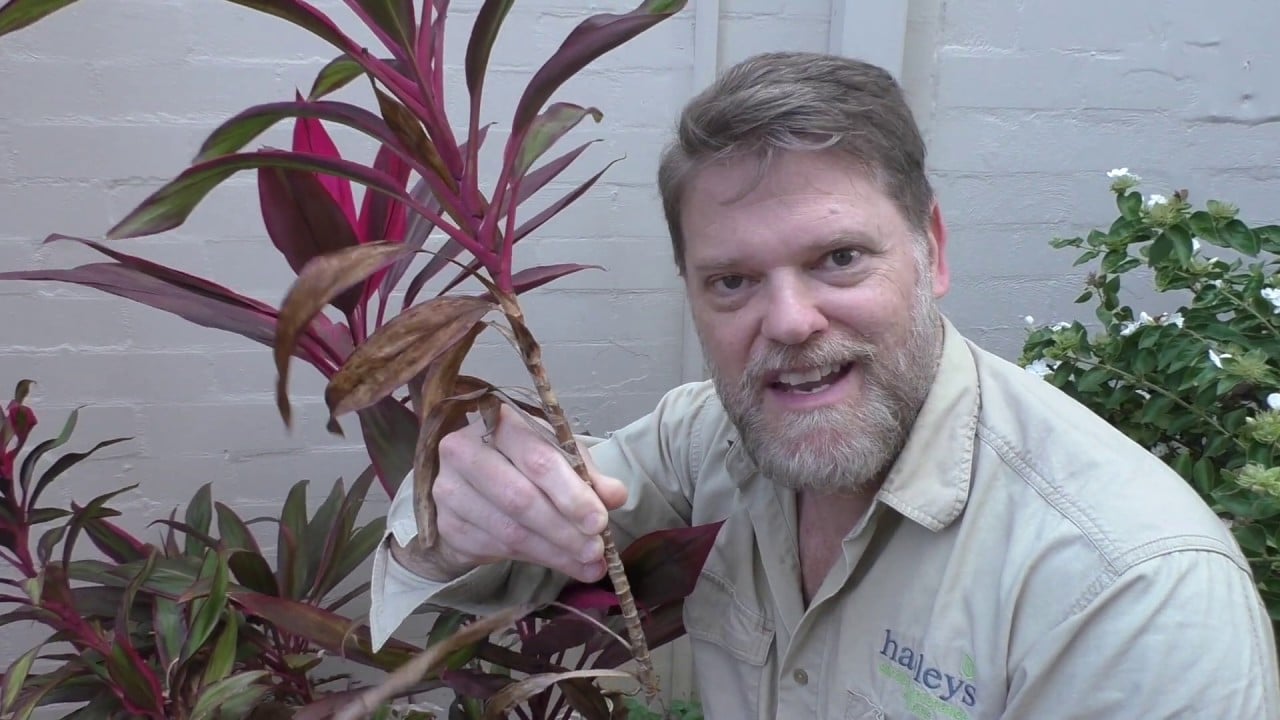Table of Contents
Do you have a Cordyline plant in your house or garden? The cordyline plant is a common decorative and colourful plant that is easy to grow and maintain. It is a low-maintenance and evergreen shrub. The Cordyline plants consist of various different plant species. They are also known as cabbage trees and Ti plants. These plants are native to the countries of Australia and New Zealand and also the Oceania Islands of Indochina.
The Cordyline plant can grow outdoors as well as indoors. These plants can survive outdoors only if it is planted in a warm and tropical area. Other than that, it is best to plant Cordylines indoors.
The leaves of Cordyline have a leathery texture and come in a variety of colours like yellow, white, pink, purple, green, and red. Some species of Cordyline also bear vibrant and colourful flowers that are followed by berries.
Cordyline Plant Care & Growing Tips
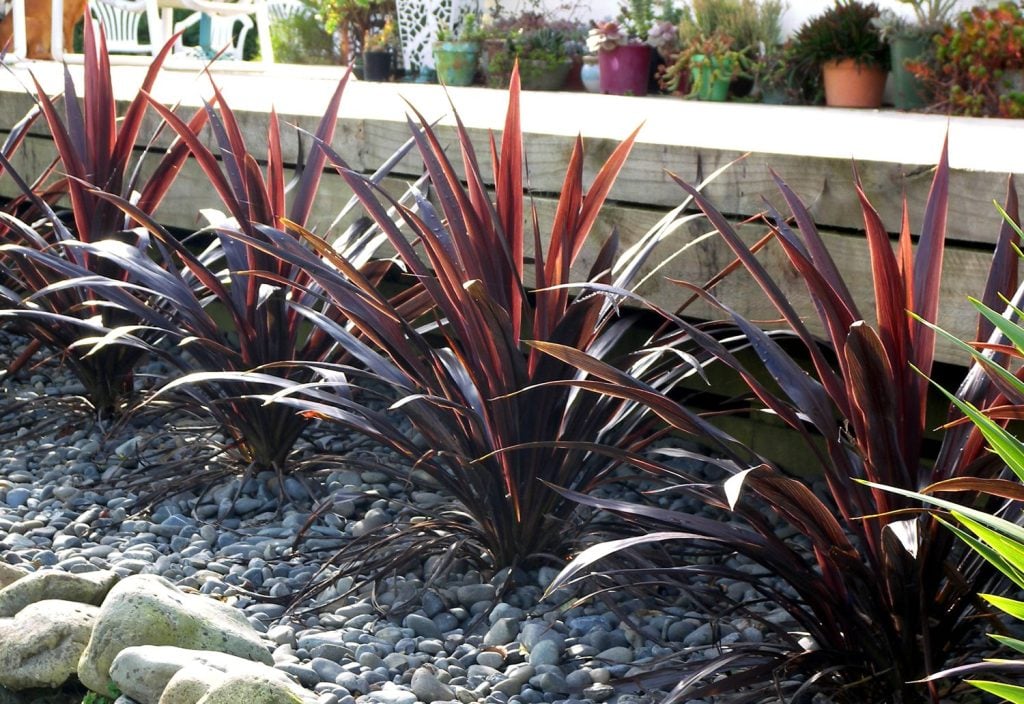
We have enlisted a few tips that will help your Cordyline plants to grow healthily.
1. Light
Cordyline prefers sunlight over shade. However, you need to be careful about the amount of sunlight your plant receives. The plant requires bright light, but for unhabituated plants, avoid direct sunlight. Cordyline with green leaves would do well with direct light, while Cordyline plants with other-coloured leaves prefer filtered or bright indirect sunlight.
If you are growing the Cordyline plant outdoors, select an area that receives more sunlight and less shade. Even though the plant loves bright, sunny conditions, make sure that you don’t expose the plant to prolonged direct sunlight, as this can cause the colour of the leaves to fade away.
2. Water
You must water your Cordyline plants when the soil feels dry. It is recommended to water the plant until you notice it is coming out from the drainage holes. Avoid pouring the drained water back into the Cordyline. If the Cordyline is newly planted, you must water it regularly during the first summer. Plants that are well-established don’t require much watering since they become drought-tolerant with time.
During the growing season, you may need to water them daily, but during winters, they must be kept dry. If you’ve planted a Cordyline indoors, you might have to water it occasionally during winters, and those planted outdoors must be moved to a sheltered place to avoid any damage due to winter rains or frost.
3. Soil
Moist and well-draining soil are perfect for Cordyline plants. Neutral to alkaline soil works best. The ideal pH level would be 6-6.5. To test the pH level of the soil, you can use a pH tester probe. In case the pH is low, you can raise it by adding some pelletized limestone.
In case the pH is high, you can lower it by applying Soil Sulfur, Chelated Iron, or Aluminum Sulfate. In order to maintain acidic soil conditions and to increase acidity, you can also use compost like mulch.
In the ground, Cordyline shrubs grow well in deep soils. Heavy clay soils must be amended at a ratio of 50:50 with compost, bagged topsoil, sand, and a good planting mix. If the soil is heavy clay, it is recommended to grow the Cordyline in a raised mound or bed. If you are growing the Cordyline in sandy soils, add some peat humus or peat, compost, or topsoil so that it retains moisture.
4. Humidity and Temperature
Cordylines thrive well in hot and tropical climates. The ideal temperatures for these plants would be above 62 degrees Fahrenheit. It is recommended not to keep the plant near windows or a cold draft. These plants cannot survive if they are exposed to cold winter winds or long spells of rain. If you notice that the leaves of the plant are dropping, try raising the humidity and temperature.
5. Feeding
Most Cordylines do not require feeding. Cordylines planted in containers might need a balanced fertilizer during the spring and summer months. If you are going to keep a Cordyline shrub in a container permanently, you must remove 5 centimetres of old manure or compost and replace it with a fresh one. Feeding is not necessary during the winter months.
6. Mulching
If you’ve planted Cordylines along the borders, a thick mulch layer must be added above the root zone during the autumn months. This will help to insulate the Cordyline roots. However, if the shrub is planted in a container, you can add gravel mulch to give a good finish.
7. Pruning
Cordylines hardly need any pruning. They can be cleaned up easily to keep them looking healthy and beautiful. You can also cut them back if they grow tall or if winter frost or winds damage them. If your plant is well-established, it will bear flowers and fruits during warm summers.
You can either retain or remove the small spikes of white flowers. If you decide to keep them, these tiny spikes will turn into small purple or red fruits that resemble berries. In case the Cordyline grows too tall or large, you can trim it during spring.
You can cut the primary stem. Make a cut above the basal shoot or side shoot. Be careful if you are planning to cut down a big specimen that has a large thick trunk. You can hire an experienced and skilled contractor for this.
Add a balanced fertilizer once the pruning is done to promote new growth. In case of frost damage or wind burn, the plant can be pruned during spring. You can cut right above the side shoots or above a strong point on the trunk below any damage and rot.
Problems and How to Prevent Them
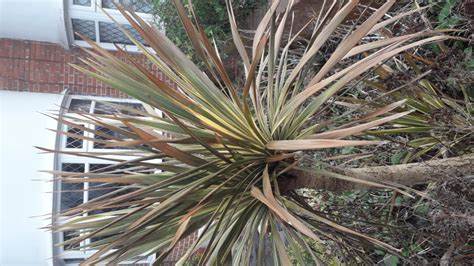
Cordyline plants are affected by certain diseases and pests. You can look for the following abnormalities in your plant to detect the problem:
1. Leaf Spots
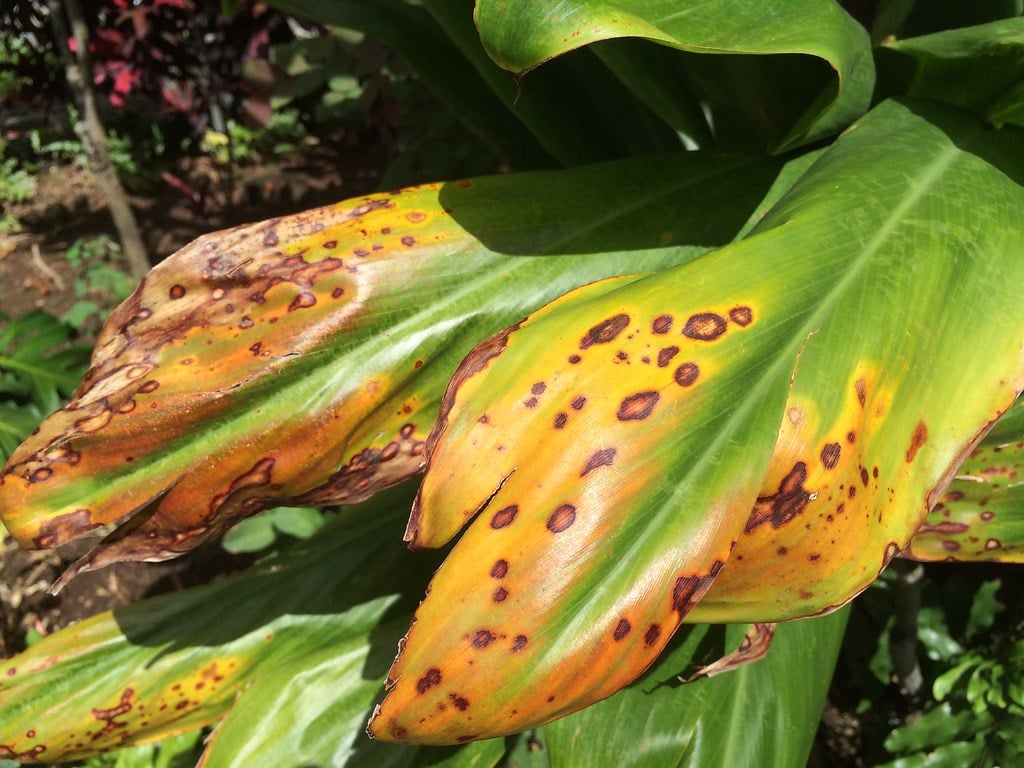
Leaf spots appear because of physical damage like hail, cold winds, and winter rains. If the leaf spots have purple borders or yellow halos, it might indicate a disease called Phyllosticta Leaf Spot. You must avoid overhead watering if you notice this or apply a fungicide to protect healthy plants. You must also prune away the affected parts of the plant.
2. Yellow or Brown Leaves
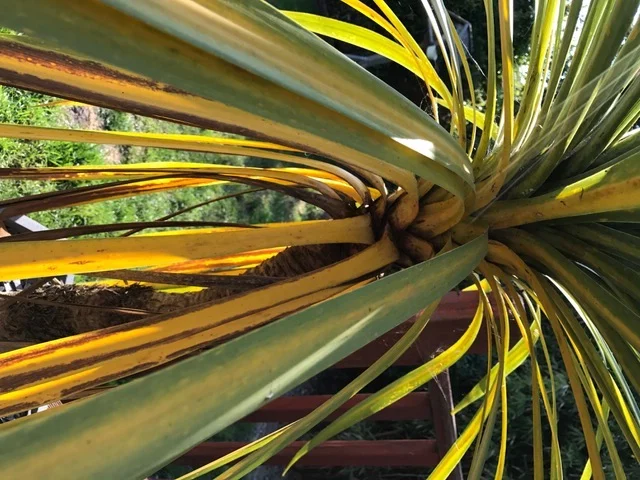
Yellow or brown leaves on Cordyline plants might be due to various stressors. It might indicate drought or heat stress, frost damage, excessive exposure to wet weather conditions, or due to a lack of nutrients. Yellow leaves can also mean that the plant is growing under fluctuating weather conditions. You must check for drafts and let the leaves drop. Check if the shrub is faring well in other spots. In case the lower leaves start turning yellow, it might indicate root rot.
To prevent winter damage, Cordylines must be wrapped well with fleece, bracken, hessian, polystyrene, and straw wrappings. These wrappings work well and prevent possible rotting and sweating.
3. Frost Damage Affecting the Bark
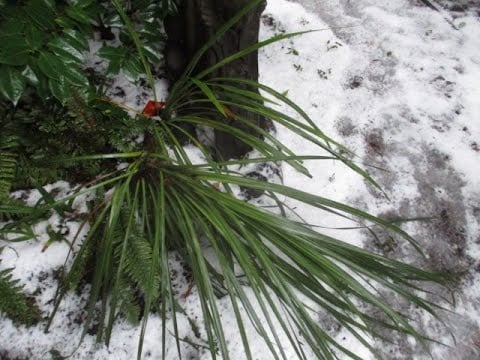
During the extremely cold winter months, frost damage can quickly reach the bark and damage it. This makes the plant susceptible to catching an infection called Cordyline Slime Flux.
Some other indicators of this infection are white or orange-tinged ooze from the stem, foul-smelling ooze, or black staining right below the ooze patch. This infection mostly happens because of intense colds. You can control this infection in the following ways:
- Scrub off the bacterial ooze from time to time. However, it cannot be completely stopped.
- You can do some pruning to put the shrub back to its healthy state if the part is way above the main trunk. Use a saw and cut right below the area from where the ooze is coming out. It is possible that the plant will sprout and produce new foliage heads during the summer months.
4. Other Diseases and Pests
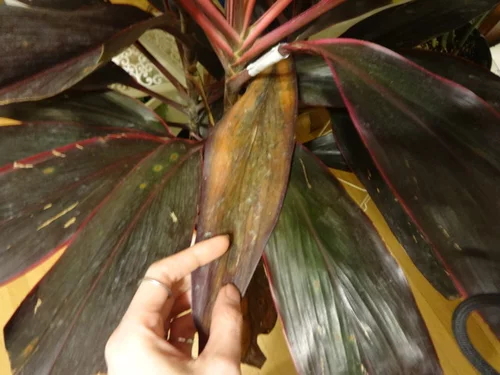
If the Cordyline grows under normal temperature and light conditions, there are no major problems. However, various fungi and bacteria can cause the roots to rot. This can be prevented by ensuring that the soil is well-drained and the plant is adequately watered.
Cordyline plants are also prone to get infested with brown worms. You can get rid of brown worms by treating the plant leaves with an alcohol-soaked cotton swab. You can also treat it with an appropriate insecticide.
Conclusion
We hope this article will help you take better care of your Cordyline plants. These tips will help prevent any kind of damage and also help the plant recover in case some problem arises.
Knowing the ideal environmental conditions and other vital factors mentioned above will help you to increase the life span of this shrub and keep it healthy. Make sure that you water the plant regularly and provide them with enough sunlight until they are fully established.
If you’re planning to add some colour and evergreen foliage to your garden, these plants are an ideal pick.
Frequently Asked Questions
Do Cordylines Like Full Sun or Shade?
Cordylines growing in tropical and sub-tropical areas can tolerate sunlight through shade. However, too much shade can make them leggy. They thrive well in well-drained and rich soil with sufficient moisture. They can also tolerate prolonged dry periods. However, these shrubs need wind protection and protection against frost damage. Cool temperate Cordyline plants like full sun and little shade.
Do Cordylines Like Wet Soil?
Cordylines thrive well in moist soil. Dry soils are not ideal for them. Also, too much water content in the soil or water-logging can cause the roots of the Cordylines to rot. The soil of the Cordyline plant should ideally have a pH between 6 and 7.
Do Cordylines Grow Fast?
Green-leaved Cordylines are the fastest growing and can reach a height of 5 meters. They are also the largest. Other coloured varieties grow less vigorously and don’t reach a height of more than 2.5-3 meters. Also, the Cordylines grown in containers do not get very tall.
Where Do Cordylines Grow Best?
The Cordyline shrubs are native to Australia, New Zealand, Hawaii, Pacific Islands, and Southeast Asia. It is a tropical and sub-tropical plant belonging to the Dracaena family. The plant can grow healthily in regions where the temperature is more than 55 degrees Fahrenheit.

